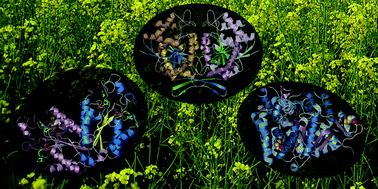Covering: 1966 to 2012
Sulfur is an essential element that must be assimilated by all organisms; however, the metabolic pathways for this task vary significantly, even among individual genera of bacteria, and especially so among eukaryotes. While all organisms require sulfurous amino acids, plants require specialized sulfur-containing metabolites, such as glucosinolates and allylsulfur compounds, for protection from herbivory and microbial infection; and the synthesis of specialized peptides (i.e., glutathione and phytochelatins) for protection against reactive oxygen species and exposure to transition metals, such as cadmium. In order to provide the complex array of sulfur-containing metabolites essential to plant viability, flux through the sulfur assimilatory pathway must be tightly regulated by controlling enzymatic activity. The X-ray crystal structures of several primary sulfur assimilatory enzymes, complemented by kinetics, have revealed mechanisms of enzymatic regulation (i.e., via redox state and protein–protein interaction) in these biosynthetic pathways, in addition to the chemical mechanisms of catalysis. This review summarizes the state of our structural knowledge of primary and secondary sulfur assimilatory enzymes from plants.

